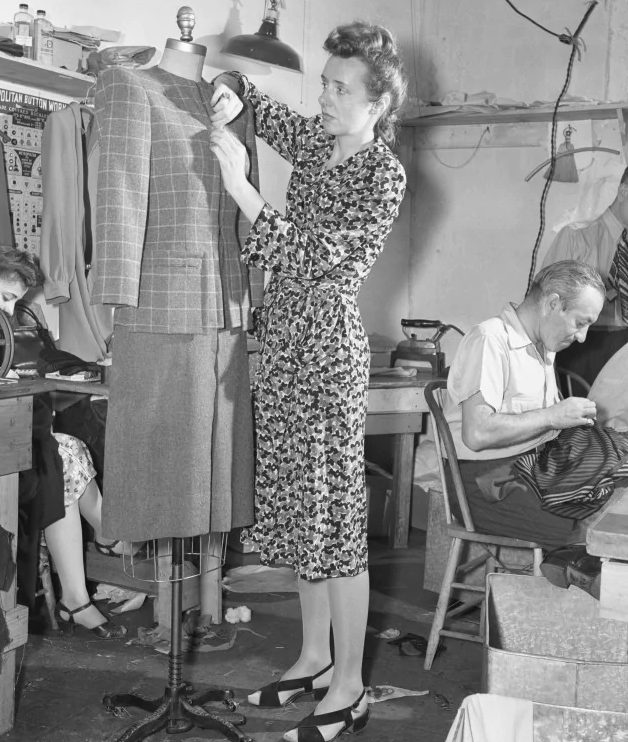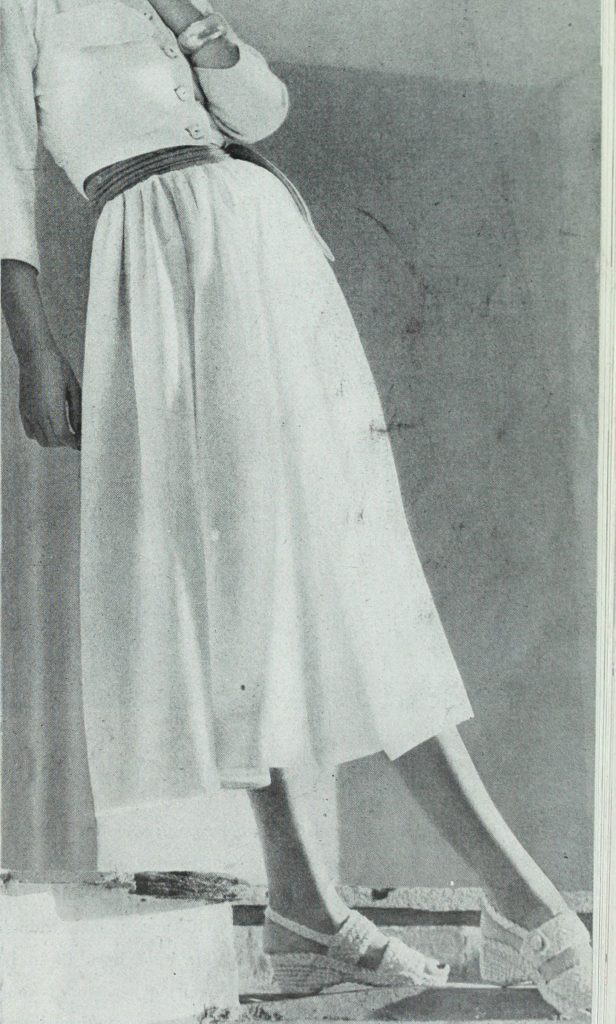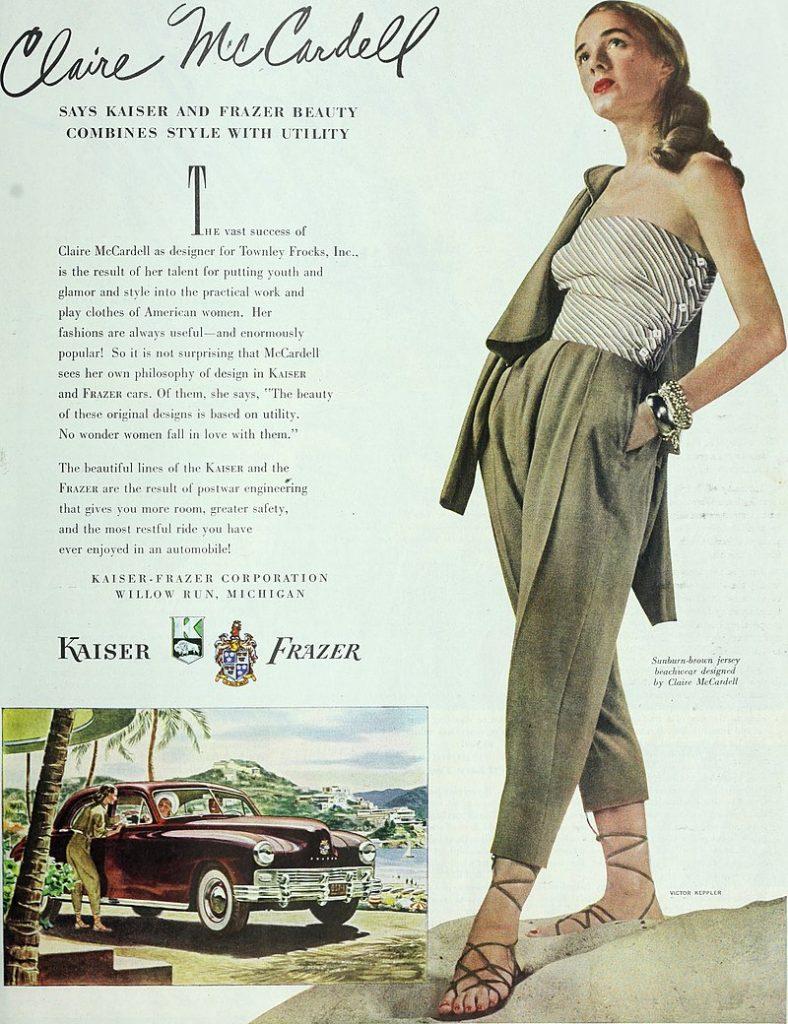For the past 400 years, the fashion industry has been dominated by French nationals, primarily men, who design exquisite, hand-sewn haute couture clothing made of the finest fabrics and worn primarily by wealthy women. There have only been a handful of women couturiers who launched and led their own fashion establishments. They include Louise Cheruit (1866 – 1955), who is often cited as the first woman to lead her own fashion business, Madeleine Vionnet (1876 – 1975), Madame Gres (1903 – 1993) and, most famously, Gabrielle “Coco” Chanel (1883 – 1971).
In 2018, McKinsey & Company, “Glamour Magazine”, and the Council of Fashion Designers in America (CFDA) published “The Glass Runway.” The 2018 report examined the role of gender in the American fashion industry. It found that women spend three times as much money on clothing as men but lead only 14 percent of the world’s 50 major fashion brands.
The impact of Claire McCardell
But in 1930s America, a window of opportunity unexpectedly opened. As if carried by a fresh spring breeze, a fledgling fashion designer named Claire McCardell swept in. Within 10 years, she would rise to become one of the most influential fashion designers of the twentieth century. She is hailed as the architect of the “American Look”. CFDA president and CEO Steven Kolb described McCardell as “the defining designer for what American fashion is.” Artist Georgia O’Keeffe owned several McCardell dresses and called her “the best woman designer we’ve ever had.”
Changing the fashion industry
Inspired by the active and increasingly independent lifestyles of post-World War I American women, McCardell rejected the dictates of the fashion industry and French couture industry tastemakers. Instead, she designed chic, casually elegant and functional clothing that disrupted the fashion landscape. She introduced items that women today take for granted — clever wrap dresses, pleated skirts and sporty sundresses made of cotton, gingham or denim. She pioneered the now-iconic shirtwaist dress and presented wool jersey sheath dresses for day or evening wear. McCardell designed for the emerging class of career and other working women who wanted stylish, well-made clothing that was easy to care for.
McCardell’s background
Claire McCardell (May 1905 – March 1958) was born in Frederick, Maryland. She attended Hood College in her hometown. After two years, she left to study fashion design at the Parsons School of Design in New York City, spending a year at the Paris campus before graduating in 1928. Tall and slender, her first job after Parson’s was as a fit model for the New York City department store B. Altman and Company.
By 1929, McCardell was working as a design assistant to the independent designer and dressmaker Robert Turk. In 1930, Henry Geiss, owner of the mid-market New York City clothing manufacturer Townley Frocks, offered to buy Turk’s business and install him as Townley’s chief designer. Turk accepted and brought his protegee McCardell with him to become his design assistant. But sadly Turk, her friend and mentor, drowned in a boating accident on Memorial Day in 1932. Henry Geiss reluctantly invited 27-year-old McCardell to become his new chief designer at Townley.
A turning point
“The Washington Post” Magazine section reported McCardell, still working as a designer at Townley Frocks, was hurrying across the showroom with a carton of coffee when she “nearly knocked down” a buyer from New York retailer Best & Co., who was there to view Townley’s fall collection.
McCardell was wearing a dress that she had designed and sewn. Made of red wool, the dress had no shoulder pads, no darts at the bust line and no sewn-in emphasis at the waistline to give the appearance of an hourglass silhouette. On the hanger, the dress looked like a beach towel. Townley’s owner wasn’t showing the dress to buyers because he didn’t think it would sell. When worn with a belt at the waist, the shapeless mound of fabric transformed into a stylish and sophisticated head-turner.
The buyer was intrigued by what he saw. “Wait a minute,” he reportedly said of McCardell’s dress. “You didn’t show me that one.” He bought McCardell’s dress off her back. Best & Co. called her design the “Nada,” but fashion industry influencers nicknamed it the Monastic. According to publicity material, it was “as simple as a monk’s cassock.”
Exploding growth of the Monastic
In Fall 1938, Best & Co. created demand for the Monastic with full-page ads in New York City newspapers. “Once or twice in a decade a history-making style appears,” the ad said. “It fits everyone — no alteration is necessary except in length” and “it’s as appropriate above a typewriter as a tea table.” It is “a dress that women envy, a dress that men admire.”
Best placed an initial order of 100 with Townley Frocks and priced the Monastic at $29.95. The entire order sold out in one day. The press raved that, “it created more comment and discussion than any dress has in years.” It became the best-selling design of 1938. The Monastic launched McCardell’s career as an independent fashion designer.
While she was often portrayed as a shy small-town girl in the hundreds of articles written about her over her career, McCardell’s personal correspondence and papers, which are housed at the Maryland Historical Society in Baltimore and the Fashion Institute of Technology in New York, reveal a focused and ambitious woman. She possessed a finely honed business acumen and was unafraid to negotiate for her vision.
McCardell asked Geiss to put her name on the Townley label. He refused, apparently believing that designers should work behind the scenes. In a letter to her parents McCardell discussed the Monastic, “It’s been copied by every manufacturer in the country. I seem to have proved to everyone that I did it first, but I should have copyrighted the pattern.” She would never make that mistake again.
Elevator pitch
In another letter to her parents, she wrote, “Geiss has made such a mess of everything at Townley.” The dress that “revolutionized the whole dress industry,” as Geiss described it in a 1955 Time Magazine article, destroyed his company. Overwhelmed by production problems and the battle to shut down Monastic knock-offs, Geiss closed his business. McCardell was out of a job.
Fortune smiled in 1940, however, when Townley Frocks was revived under a new partnership between Geiss and Adolph Klein, a mover and shaker salesman from Brooklyn. As the story goes, about two years after Townley ceased production, McCardell found herself riding an elevator with former boss Geiss and Klein, his new backer. During the ride Geiss revealed to McCardell that he and Klein planned to re-launch Townley. As the ride ended, Klein impulsively asked McCardell to return to her post as chief designer. A shocked McCardell disembarked, promising to consider the idea before Geiss could object.
The beginning of Claire McCardell Clothes
McCardell signed on, but with caveats. She would have final approval on her designs and her name would appear on the labels. The revived line launched as Claire McCardell Clothes by Townley. This made her among the first American designers to have her name on the clothing she designed.
With McCardell at the design helm, business boomed. The 1940s became the decade of the McCardell woman — clad in casual jersey, wearing wrap dresses or pantsuits, maybe going braless and feeling confident in her stylish attire. She popularized the ballet flat when, during a shortage of leather during World War II, she commissioned Capezio, the dancewear specialists, to produce a line to match her designs. McCardell was ahead of the curve when she expanded her line to include bathing suits, jewelry, sunglasses, wedding dresses, and children’s attire. “It’s so much more fun making all kinds of clothes,” she said.
In 1942, she designed her famous “Popover Dress,” in response to a challenge from Harper’s Bazaar Magazine to create something fashionable that women could wear to clean house and then wear to a cocktail party. The dress sold for $6.95 and more than 75,000 were sold in the first season alone. The “Popover Dress” received a citation from the American Fashion Critics Association.
Celebrating her career
In 1943, McCardell won a Coty Award, in 1946, the Best sportswear Designer Award, and in 1948, the Neiman Marcus Award. In 1955, journalist Betty Friedan, who would go on to publish her groundbreaking screed “The Feminine Mystique,” published a profile on McCardell under the headline “The Gal Who Defied Dior.” By 1952, her stature in the fashion industry had grown. McCardell became a partner at Townley Frocks.
McCardell remained single into her late 30s. In 1943 she quietly married Texas-born architect Irving Drought Harris. Harris “never approved of her career,” McCardell’s brother Bob told “The Baltimore Sun”. “He would have been happy if she gave that up,” he said, but “she was intent on having her career. It was her first love.”









Love this wonderful article.
thanks for taking the time.